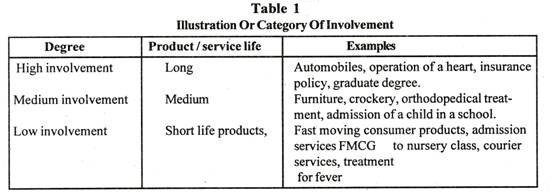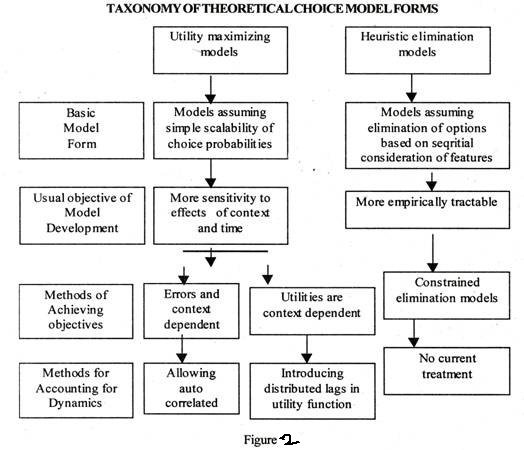Understanding the present day Scenario of HRM
Business environment is changing environment and so is HR environment. The changing environment of HRM includes work force diversity, economic and technological change, globalisation, organizational restructuring, changes in the nature of jobs and work and so on.
1. Work force Diversity:
Diversity has been defined as any attribute that humans are likely to use to tell themselves, that person is different from me and, thus, includes such factors as race, sex, age, values, and cultural norms’. The Indian work force is characterized by such diversity that is deepening and spreading day by day.
It is likely to be more diverse as women, minority- group members, and older workers flood the work force. With the increasing number of women entering the work force due to a combination of factors like women’s emancipation, economic needs, greater equality of sexes, education and so on, additional pressures of managing a different set of problems at the work place have arisen. As such, the number of women is on increase in all walks of life i.e., teachers, lawyers, doctors, engineers, accountants, pilots, parliamentarians and so on.
However, increasing number of women in the work force has been necessitating the implementation of more flexible work scheduling, child care facilities, maternity and now paternity leave also and transfer to location of husband’s place of posting.
Also, as the work force ages, employers will have to grapple with greater health care costs and higher pension contributions. On the whole, the increased diversity of work force will place tremendous demands on the HR management function.
Further, creating unanimity from a diverse work force has also become a challenge for HR manager. This is because, as several experts’ put it; diversity is marked by two fundamental and inconsistent realities operating today with it. One is that organisations claim they seek to maximize diversity in the work place, and maximize the capabilities of such a diverse work force.
The other is that traditional human resources system will not allow diversity, only similarity. These experts emphasize that employers traditionally hire, appraise, and promote people who fit a particular employer’s image of what employees should believe and act like. At the same time, there is corresponding tendency to screen out those who do not fit.
2. Economic and Technological Change:
Along with time, several economic and technological changes have occurred that have altered employment and occupational pattern. In India too, there is a perceptible shift in occupational structure from agriculture to industry to services.
The New Economic Policy, 1991 has led to liberalization and globalization giving genesis to multinational organisations with their multicultural dimensions having certain implications for HRM. The implications of globalization for HRM are discussed subsequently. The Indian economy has already become an open economy but it will be more so from April 2003 with the complete lifting of quantitative restrictions (QRs) on imports in India.
Technology has become the hallmark of the modem organisations. As such, modem organisations have become the technology-driven organisations. So to say, men are replaced by machinery. Manufacturing technology, for example, has changed to automation and robotisation.
Manufacturing advances like these will eliminate many blue-collar jobs, replacing them with fewer but more highly skilled jobs. Similar changes are taking place in office automation, where personal computers, word processing, and management information system (MIS) continue to change the nature of office work.
The explosive growth of information technology linked to the internet has ushered in many changes throughout the organisation. One of the major changes led by information technology is that it has hastened what experts call the “fall of hierarchy”, i.e., managers depend less and less on yesterday’s “stick-to-the -chain-of-command approach,” to their organising function.
This is so because earlier it used to be, if one wanted information, one had to go up, over and down through the organisation. Now, one just taps in. That’s what broke down the hierarchy. Somuchso, now employees do not need to be present a definite work place.
Instead, they can work from their own places/ residences through the net. This has given genesis to a new breed of organisations, called ‘virtual organisations.’ (VO).
3. Globalization:
The New Economic Policy, 1991 has, among other things, globalised the Indian economy. There has been a growing tendency among business firms to extend their sales or manufacturing to new markets aboard. The rate of globalization in the past few years in India has been nothing short of phenomenal.
Globalization increases competition in the international business. Firms that formerly competed only with local firms, now have to compete with foreign firms/competitors. Thus, the world has become a global market where competition is a two-way street.
Globalization has given genesis to the multinational corporations (MNCs). The MNCs are characterised by their cultural diversities, intensified competition, variations in business practices and so on. As an international business expert puts it, ‘the bottom line is that the growing integration of the world economy into a single, huge market place is increasing the intensity of competition in a wide range of manufacturing and service industries.
Given these conditions, from tapping the global labour force to formulating selection, training and compensation policies for expatriate employees have posed major challenges for HRM in the next few years. This has underlined the need for studying and understanding HRM of multinational organisations or international organisations separately.
4. Organizational Restructuring:
Organizational restructuring is used to make the organisation competitive. From this point of view, mergers and acquisitions of firms have become common forms of restructuring to ensure organizational competitiveness. The mega-mergers in the banking, telecommunications and petroleum companies have been very visible in our country. Downsizing is yet another form of organizational restructuring.
As a part of the organizational changes, many organisations have “rightsized” themselves by various ways like eliminating layers of managers, closing facilities, merging with other organisations, or out placing workers. There has been a practice to flatten organisations by removing several layers of management and to improve productivity, quality, and service while also reducing costs. Whatever be the form of restructuring, jobs are redesigned and people affected.
One of the challenges that HRM faces with organizational restructuring is dealing with the human consequences of change. For example, the human cost associated with downsizing has been much debated and discussed in the popular press. As such, HRM needs to focus on the changed scenario uniquely and that is not so simple. Thus, management of HR activities has become crucial for HR managers.
5. Changing Nature of Work:
Along with changes in technology and globalization, the nature of jobs and work has also changed. For example, technological changes like introduction of fax machines, information technology, and personal computers have allowed companies to relocate operations to locations with lower wages. There is also a trend toward increased use of temporary or part-time workers in organisations.
One most significant change in the nature of work is that it has changed from manual to mental/ knowledge work. In this context, the management expert Peter Drucker’s views are worth citing. He said that the typical business will soon bear little resemblance to the typical manufacturing company of 30 years ago.
The typical business will be knowledge-based, an organisation composed largely of specialists who direct and discipline their own performance through organized feedback from colleagues, customers, and headquarter. For this reason, it will be what he calls an information-based organization.
As a result, the organizations are giving and will give growing emphasis on their human capital i.e., the knowledge, education, training, skills, and expertise of employees, the expense of physical capital like equipment, machinery and physical plants This growing emphasis on education and human capital has, among other things, changed the nature of economy as service-oriented economy.
In the changed economic scenario, jobs demand a certain level of expertise that is far beyond that required of most workers 20 or 30 years ago. This means that companies are relying more on employee’s creativity and skills, i.e., employee’s brain power.
As Fortune magazine has rightly said:
“Brain power ….has never before been so important for business. Every company depends increasingly on knowledge-patents, processes, management skills, technologies, information about customers and suppliers, and old-fashioned experience. Added together, this knowledge is intellectual capital”.
As such, the HR environment has changed. The challenge posed by changed environment is fostering intellectuals or human capital needs managing these differently than those of previous generation. Here, Drucker puts that the centre of gravity in employment is moving fast from manual or clerical workers to knowledge workers, who resist the command and control model that business took from the military 100 years ago. Now that the changing environment of HRM is delineated, we can conveniently present the new HR management practices in such changing environment.



